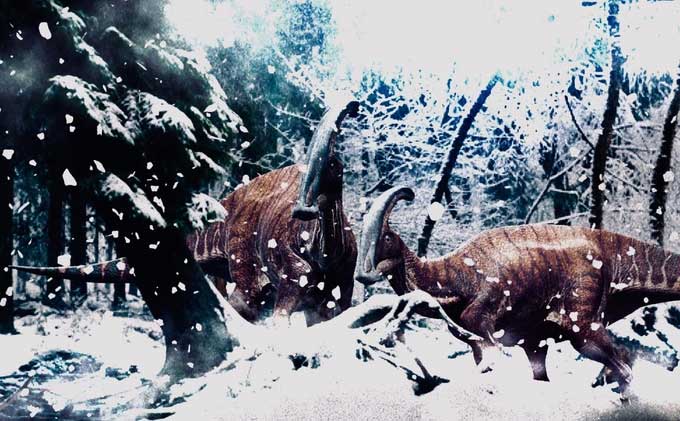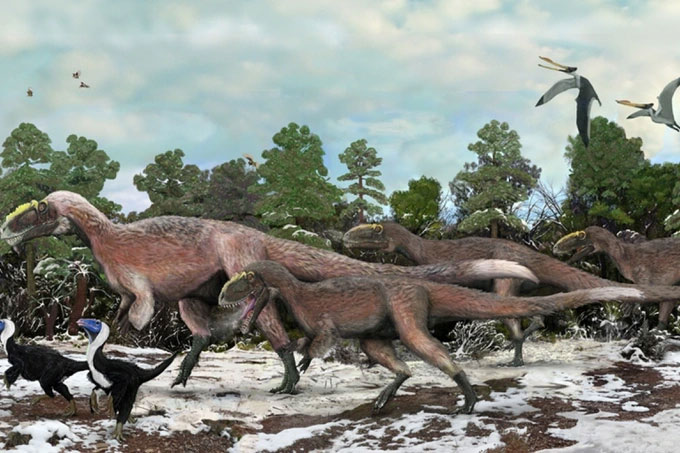Dinosaurs could dominate the planet and rule over all species thanks to this special ability that gave them an advantage.
Dinosaurs first appeared at temperate latitudes in the Southern Hemisphere around 231 million years ago during the Triassic period (252 million – 201 million years ago). At that time, the continents on Earth were still connected to form a supercontinent known as Pangaea.

The survival ability of dinosaurs stemmed from their cold tolerance. (Photo: Getty).
Then, about 202 million years ago, a mass extinction event marked the transition from the Triassic to the Jurassic period, when a series of volcanic eruptions created clouds of ash that blocked sunlight, leading to a chilling cold that killed more than 75% of species living on land and in the oceans.
At that time, dinosaurs had to adapt to survive, as explained in a recent study published in the journal Scientific Advances.
“The key to the absolute dominance of dinosaurs is quite simple. Essentially, they were animals adapted to cold weather. When it got cold everywhere, they were essentially ready, while other animal species were not,” said Professor Paul Olsen, the lead author of the study from Columbia University, New York.
To provide further evidence for this claim, paleontologists discovered dinosaur footprints in basins along the coast of China, which was once a frozen region. Additionally, they found small pebbles in the sediment layers, likely remnants of ice floes that dinosaurs carried and deposited as these layers melted in the summer.
This indicates that these areas were regularly frozen (at certain times of the year), and dinosaurs were still able to thrive there.
According to Dennis Kent, a co-author of the study, this evidence suggests that dinosaurs not only survived in freezing weather but also thrived during that time, which ultimately led them to become the absolute rulers on Earth by the end of the Triassic period.
How Did Dinosaurs Tolerate the Cold?

Dinosaurs certainly thrived well in cold climate conditions, while many of their competitors perished.
Their ability to withstand winter has long been questioned, as they did not possess thick “fur” or cold-resistant fat like bears.
In fact, the new research has faced various opposing viewpoints, challenging the common belief that dinosaurs could only survive in warm climates.
According to Professor Stephen Brusatte, a paleontologist and evolution expert at the University of Edinburgh, Scotland, this is merely a misconception about dinosaurs. “There was a bias that dinosaurs always lived in lush tropical forests, but the new study shows that higher latitudes would freeze and even be covered in ice at various times of the year,” Brusatte stated.
“It is still unclear how they adapted to the cold, but these dinosaurs certainly thrived in this climate, while many of their competitors died.”
According to Professor Brusatte, this research also helps expand the search for two polar regions where dinosaurs may have once existed and lived. This will assist scientists in uncovering how these ancient reptiles managed to survive in harsh environments.

















































